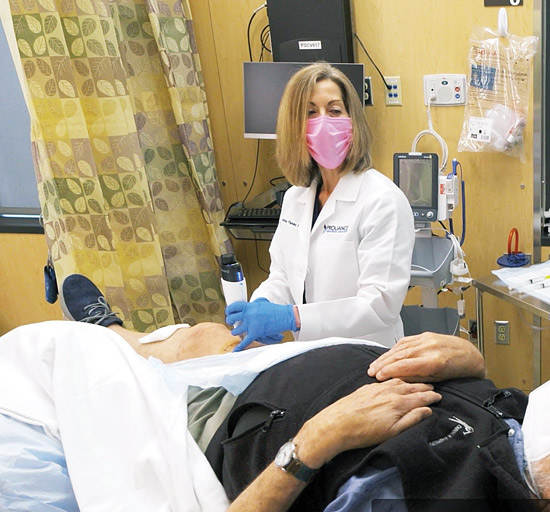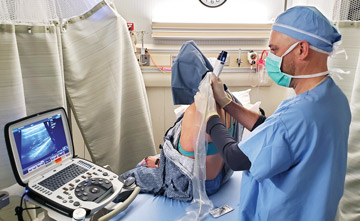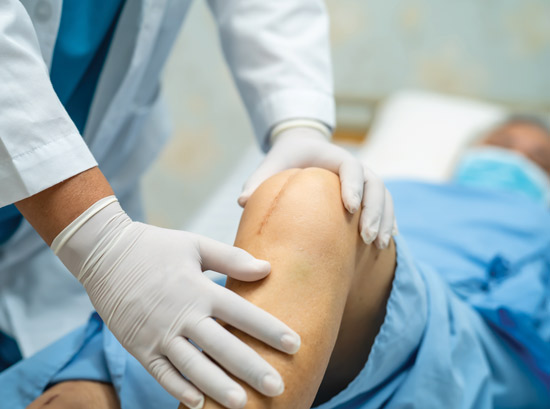William P. Barrett, MD, had a patient scheduled for a knee revision surgery when he ran into a problem. The patient’s joint pain was so great that they desperately needed some relief in the weeks leading up to the procedure. “This patient had a very loose tibial component, and could barely walk,” says Dr. Barrett, a surgeon with Proliance Orthopaedic Associates, an orthopedic provider with several locations in the Seattle area.
That’s when Jana L. Flener, PA-C, OPA-C, COT, a physician assistant at Proliance, suggested Dr. Barrett try cryoanalgesia, a procedure that freezes targeted nerves with carbon dioxide or nitrous oxide to provide weeks or even months of pain relief. “Admittingly, I was a bit skeptical at first,” says Dr. Barrett. “But after we treated the patient, she felt good enough to literally hop on the injured leg. It was that dramatic.”
Instant and effective pain relief is one of the major selling points of cryo. Another is its versatility. The analgesic technique can be used to provide a conservative, non-surgical treatment option to patients who don’t yet need a total joint replacement or who aren’t candidates for surgery due to inhibiting factors such as a high BMI.
Cryo can also be used to control pain in patients undergoing treatments intended to optimize their health before surgery — such as losing weight to meet a BMI cutoff, lowering blood glucose levels and quitting smoking. “Once we identify patients who are at risk of complications, we keep them comfortable as we ready them for a perioperative journey that increases successful outcomes,” says Ms. Flener.
Proliance providers also used cryo to provide much-needed relief to patients during the surgical shutdown caused by the pandemic. “When COVID-19 hit, cryo was very effective in treating the pain of patients while we waited for the green light to get back to operating,” says Ms. Flener.
Another benefit of cryo that can’t be overstated given the fact that we’re in the midst of a nationwide opioid crisis: It allows providers to treat pre- and post-op pain without using habit-forming narcotics that are rife with negative side effects. “It’s a non-pharmaceutical form of analgesia,” says Ms. Flener. “It gives us one more thing to add to multimodal regimens.”
.svg?sfvrsn=be606e78_3)



.svg?sfvrsn=56b2f850_5)